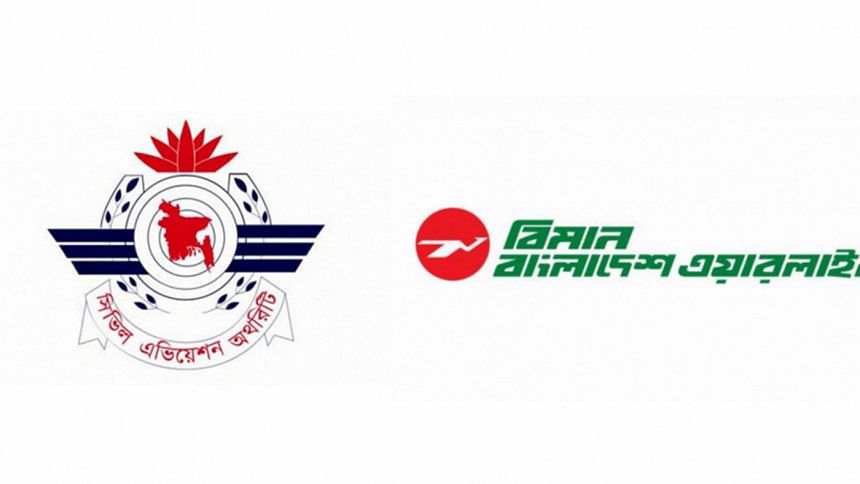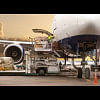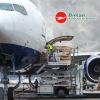CAAB, Biman propose fee cuts to boost air cargo

The Civil Aviation Authority of Bangladesh (CAAB) and Biman have proposed reducing landing, parking, and ground handling charges at the country's airports to make air cargo services cost-effective and resilient amid global disruptions.
The recommendations, among others, were made to the Ministry of Civil Aviation and Tourism after a meeting between CAAB and Biman, said CAAB Chairman Air Vice Marshal Md Monjur Kabir Bhuiyan.
"As per directives from the highest level, we've proposed adjustments to make cargo operations smoother and cheaper. The final decision now rests with the ministry," the CAAB chairman said.
CAAB and Biman came up with the much-anticipated move after India abruptly suspended third-country transshipment.
The suspension, announced on April 8, has posed significant challenges for Bangladesh's garment exporters, who are now struggling to send urgent international shipments without the Indian route.
The route via Kolkata and Delhi airports allowed Bangladeshi exporters to move goods overland to India through the Benapole-Petrapole border and then air-ship them worldwide.
Air transshipment through India became popular during the Covid pandemic, offering faster service and lower costs than the Hazrat Shahjalal International Airport (HSIA).
According to Industry estimates, in a lean season, about 18 percent of Bangladesh's garment air cargo goes through Indian airports.
Bangladesh exported roughly 3,400 tonnes of garments by air in a week, with 600 tonnes flown through Indian airports before the transhipment ban, according to data from the Bangladesh Freight Forwarders Association.
One of the main attractions of Indian air transshipment was the cost.
While sending a kilogram of apparel from HSIA to Europe typically costs $2.90-$3.20 during off-peak periods (and up to $4.50 in peak season), shipping through India costs about $2.60 per kg, even after accounting for overland transport to Indian airports, said sources.
Asked about reducing this cost, a top official of Biman said, in the recommendations sent to the ministry, they have proposed reducing the existing cost of sending per kilogram of goods by freighter.
He, however, declined to elaborate.
According to industry insiders, major international buyers like Inditex (Zara's parent company), which maintains a distribution hub in Delhi, prefer the route for speed and efficiency.
Local suppliers relied on it to shorten lead times and optimise delivery schedules.
By contrast, exporters have long complained about bottlenecks at HSIA.
Ground handling inefficiencies and mismanagement have plagued the Dhaka airport for years. Often, shipments are left exposed to the elements.
Another sticking point is the ground handling fees.
Dhaka charges 29 cents per kilogram compared with just five cents at Delhi airport.
Asked, CAAB chairman said ground handling fees will be reduced.
"Different charges imposed by the CAAB for carrying per kg of goods will be reduced a bit," he said.
He added, "We have also proposed reducing the charge for those who will operate freighter services."
"Those who will operate cargo services from Sylhet Osmani Airport will pay less compared to Dhaka as we want to make the airport more lucrative. It will also be applicable for those who will operate freighters from Chattogram airport when it goes into cargo operation within two months," he added.
Sylhet's Osmani International Airport launched full-scale cargo operations on April 27.
Currently, Biman's passenger aircraft carry about 16 to 17 percent of HSIA's annual cargo load, which totals approximately 175,000 tonnes.
In addition to serving its own fleet, Biman provides ground-handling services for several international airlines, including Emirates, Cathay Pacific, Qatar Airways, Turkish Airlines, and Ethiopian Airlines, all of which operate dedicated cargo flights from Dhaka.
However, exporters have long expressed frustration over logistical inefficiencies.
Limited infrastructure, inadequate storage space, and runway constraints restrict the operation of larger freighter aircraft.

 For all latest news, follow The Daily Star's Google News channel.
For all latest news, follow The Daily Star's Google News channel. 





Comments